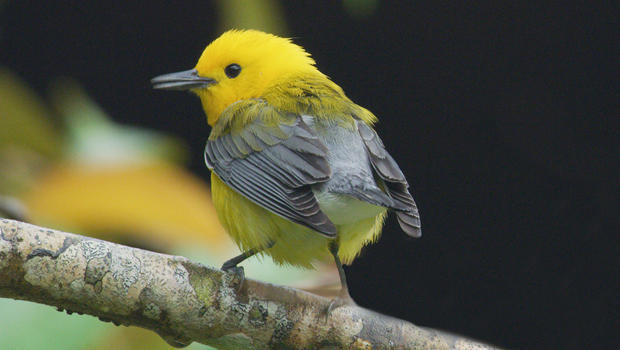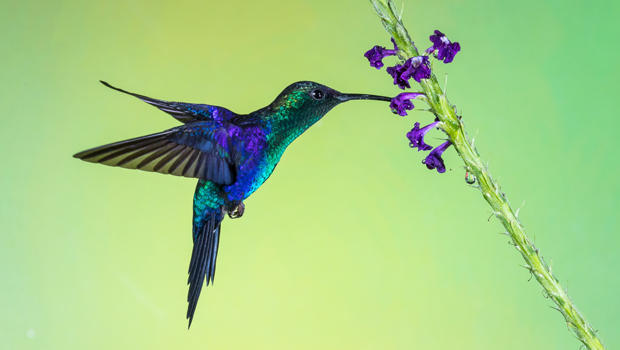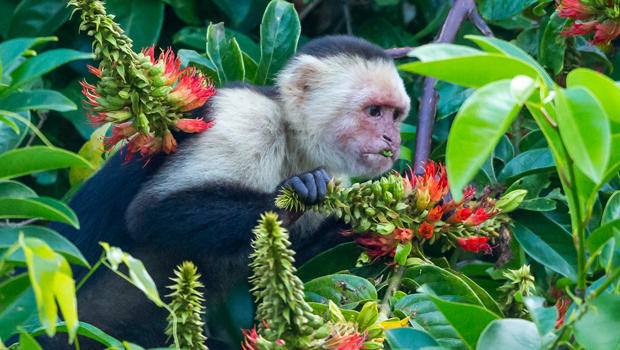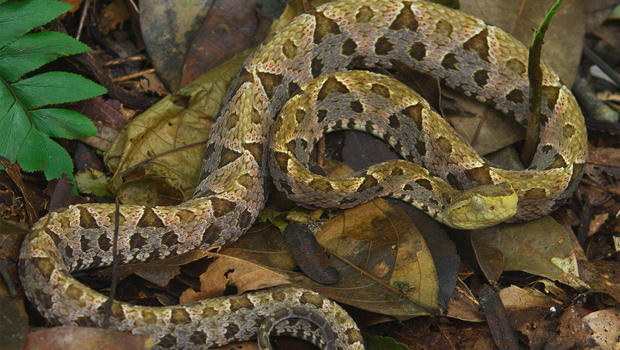Nature up close: Honduras trip report
By "Sunday Morning" contributing videographer Judy Lehmberg.
One of the last things I expected to see on my trip to Honduras was a Prothonotary Warbler.
But on our first full day of our visit, there he was, flitting between bushes at the lodge, looking for insects.
Prothonotary warblers are one of the many warblers who migrate from South America to nest in North America. They have nested on our land in southeast Texas, but I most commonly see them at High Island, a small town on the northern Texas coast world renowned among bird watchers as a great spot for spring migrants. There he was, a bird I could easily see at home.
Instead of being disappointed, I was thrilled to see that half-ounce bird on his way to my back yard! The amount of energy he has to expend to travel approximately one thousand miles is amazing, not to mention all the dangers he faces along the way, from wind turbines to loss of habitat.
Central American hummingbirds are amazingly colorful and acrobatic. We spent one day at a lodge with dozens of hummingbird feeders.
Although they are beautiful they are also quite aggressive as they defend their food sources. Several times one hummingbird literally knocked another out of the air, leaving it on the ground apparently unconscious for several moments. All of the victims did eventually wake up and fly off to continue their participation in the hummingbird wars. I've always thought if they weighed 5 pounds, we would all be scared to death of them.
The white-headed capuchin monkey sometimes rubs plants, ants or millipedes on its hair and skin, possibly as a protection from insects, ticks and parasites. They also use tools, such as sticks to hit snakes who try to catch their babies. One even used a squirrel monkey as a projectile by throwing it at a human. The one we photographed was quietly eating flowers.
A classic rain forest shot of an anole lizard silhouetted on a large leaf.
The fer-de-lance (French for lance head) is a snake with a nasty reputation. They are poisonous and do account for many snake bites in Central and northern South America, but they are only trying to protect themselves from a much larger threat: us.
I would like to say a huge thank you to Elmer Escoto, our gentle, endearing Honduran guide, and all of the lovely people at the lodge. We did miss a couple of animals I was hoping to see on this trip. That is just another excuse to go back to the wonderful country of Honduras.
Judy Lehmberg is a former college biology teacher who now shoots nature videos.
See also:
For more info:
- Judy Lehmberg (Official site)
- Judy Lehmberg's YouTube Channel
To watch extended "Sunday Morning" Nature videos click here!








